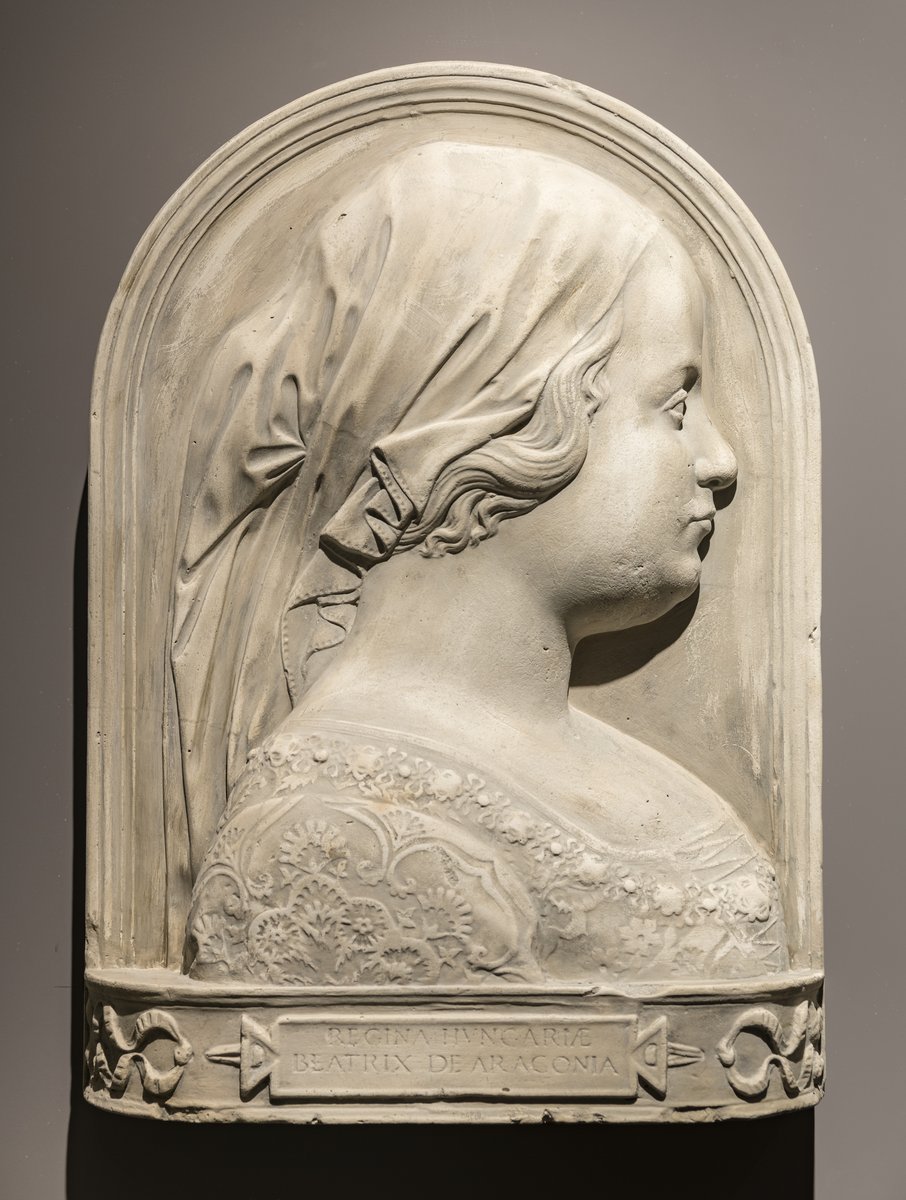Portrait of Beatrice of Aragon
Benedetto da Maiano (attributed to), Giovanni Dalmata (previous attribution), Unknown Cast Maker (cast maker)- Artist
-
Benedetto da Maiano
(attributed to)
Maiano 1442 – 1497 Florence
Giovanni Dalmata
(previous attribution)
Traú [Trogir] ca. 1440 – after 1509
Unknown Cast Maker
(cast maker)
- Dated
- ca. 1476 (original), 1870s (cast)
- Classification
- relief, plaster cast
- Medium
- plaster cast
- Dimensions
- 54 × 39 × 13.5 cm
- Inv.no.
- Rg.152
- Department
- Sculptures - Plaster casts
- Current Location of the Original Artwork
- Hungary, Budapest, Hungarian National Gallery
The marble reliefs depicting Matthias Corvinus (1443—1490) and his second wife, Beatrice of Aragon (1457—1508), daughter of Ferdinand I of Naples, are regarded as important portraits of the Italian Renaissance. The reliefs may once have decorated the royal residence in Buda Castle, yet they are first mentioned by Emperor Maximilian II (1527—1576) in a letter from 20 August 1571. In this document, the Holy Roman Emperor, who was also the king of Hungary, requested the reliefs, which were being held in Northeastern Hungary, to be sent to him. In this way, the two portraits came to be in the imperial collection, and later in the collection of the Kunsthistorisches Museum. Not until 1933 were the portraits returned to Hungary as part of an agreement between Hungary and Austria. It was only in the mid-nineteenth century that Hungarian historians and art historians rediscovered the portraits, at which time the earliest plaster casts were made. The classicising portraits, virtuoso combinations of relief and bust, are emblematic portrayals of the royal couple. The portraits seem to have been the work of the Florentine sculptor, Benedetto da Maiano. They were probably made around 1476, on the occasion of the marriage of Matthias and Beatrice.
